
25 Outdoor Herb Garden Ideas For A Healthy Aromatic Crop All Year Long
Published: 27/03/2023 | Updated: 10/09/2023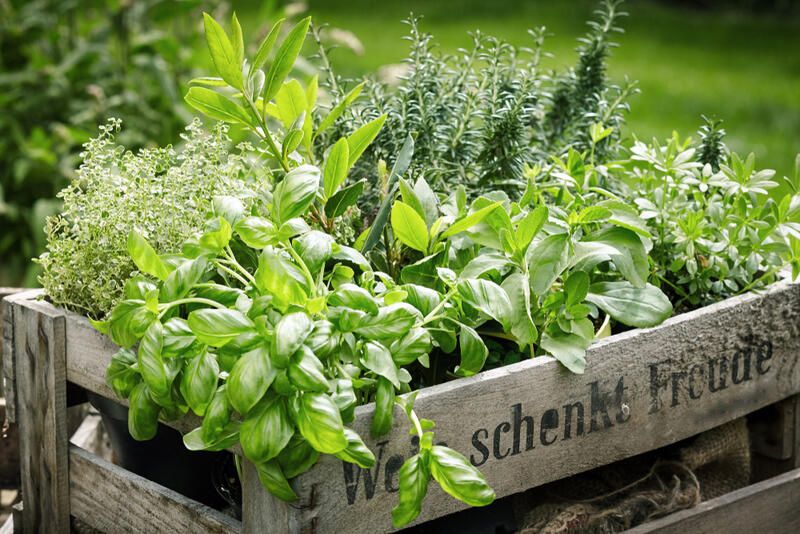
Aromatic herbs are one of the easiest ways to add flavor to your favorite dishes.


If you're not a fan of store-bought spices, herb gardening is an easy alternative that can save you money in the long run.
Here are 25 ideas for a fresh crop of aromatic herbs that will keep your kitchen stocked all year long:
1. Create a Vertical Herb Garden on Your Kitchen Wall
If your kitchen wall is in a prime location for gathering sunlight, why not take advantage of it? A vertical herb garden on the wall can add some interest to an otherwise dull space.
Creating a vertical herb garden on your kitchen wall isn’t as complicated as it may sound. You can use many different methods and materials to create this type of hanging garden. You can start with just a set of hooks or large eye screws and make sure they are secure enough to support the weight of a plant.
Once your hooks are in place, choose your plants based on what you have available at home. If you don’t want anything too heavy, try growing herbs like parsley or basil in hanging baskets instead of pots.
2. Plant Herbs in Terracotta Pots
Terracotta pots are a great option for growing herbs as well. They're inexpensive and can be used both in the garden and on patios, but they also come in a variety of different colors so they blend in well with your home's exterior.
If you're looking to create a more modern look, terra cotta pots can also be painted to match your décor!
If you're worried about the color of your pot showing through in the summer when your herbs are growing, consider using a black or dark brown herb garden planter instead.
All-purpose pots like these can be used for any type of plant and will work well as an accent piece on patios or in gardens.
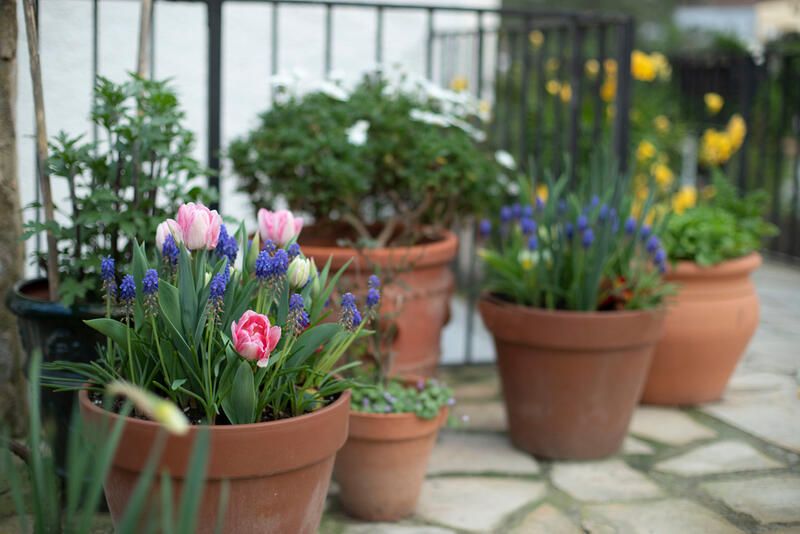
3. Build a Hanging Herb Garden
You can build a hanging herb garden with a few simple supplies. All you need is some twine and your choice of containers, pots, or planters.
Hanging herb gardens are easy to maintain; they don’t require much water or maintenance, just some sunlight and well-draining soil. They can also be used indoors if you have the space!
Potted herbs are versatile—you can use any kind of pot or container that fits your needs and style. If you want herbs growing outdoors, choose pots that are large enough for the plant roots to spread out but not so large that they would overwhelm a small patio area (or tree).
4. Plant Herbs in a DIY Planter Box
One of the easiest ways to grow a healthy, aromatic herb garden is by planting herbs in a DIY planter box.
First, you'll need to build your planter box. There are plenty of instructions available online. You can also check some of our DIY guides for ideas!
Once you've built it, fill it with soil (or potting soil if you're going with the indoor herb garden option) and plant whichever herbs strike your fancy!
If you're building an outdoor version of this project, be sure that the plants will be able to thrive in the climate where they will be planted.
Another thing to consider is drainage. While most herbs can tolerate some amount of rainwater on them without trouble (an important consideration when planning any kind of outdoor space), too much or too little water will kill them.
5. Install a Trellis for Climbing Herbs to Grow on
If your herbs are climbing plants, then it's time to think about a trellis. Trellises are sturdy structures that support the weight of climbing plants and provide them with something to climb on.
They come in many shapes and sizes, from bamboo canes to wooden frames. You can buy them or make them yourself using scrap wood and twine. Just make sure that whatever type you choose will be strong enough to hold up your harvest!
6. Choose the Right Pot or Container for your Herb Plants
When you're selecting pots for your herbs, remember to choose a pot that is large enough to accommodate the plant's root system.
You'd also need the pot to have good drainage holes. This will allow excess water to escape from your growing medium and prevent it from sitting stagnant at the bottom of your container, where it can cause root rot and other problems.
Another good tip is to use containers that are easily moved around so you can give your plants plenty of sunlight throughout the day.
In addition, consider using containers that are well suited for your plants' needs, such as size and growth rate (taller herbs should be planted in wider containers).
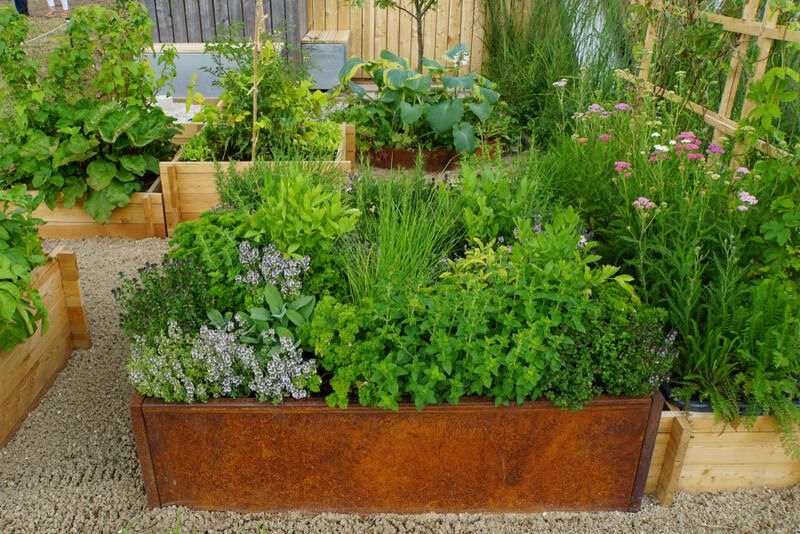
7. DIY Wall Herb Garden
Why not turn those walls into a garden?
Your home can be filled with the fresh aromas of herbs all year long with just a little bit of creativity. Here are some DIY ideas to get you started:
-
Use an old window frame. This is an ideal option if you’re wanting to grow tall plants like rosemary, sage plants, or mint, as they will have plenty of room to stretch out and flourish.
-
Use a pallet (or two). This is one of the easiest options because it’s pretty much ready-made for you!
-
Use an old door (and add some wheels). The great thing about doors is that they already come pre-drilled. A door would work well when growing smaller climbing herbs.
8. Grow Herbs in Mason Jars
Mason jars are the perfect vessel for herbs because they're inexpensive, easy to find, and can be used for so many things. You can use them for storing food or drinks and even as floral vases or candle holders.
Mason jars are also durable containers—they'll last forever if you take care of them properly—so even if your plant doesn't survive its first year, the jar will still be useful once more!
9. Sink Several Wooden Crates Into The Ground
You'll want to sink several wooden crates into the ground and fill them with soil. These boxes must be large enough for the plants you're growing, with about 2" of depth so that they can grow roots deep into the ground.
Make sure your crates are stable enough to hold up all that soil and plant! You don't want them tipping over in a rainstorm or while watering and fertilizing your plants.
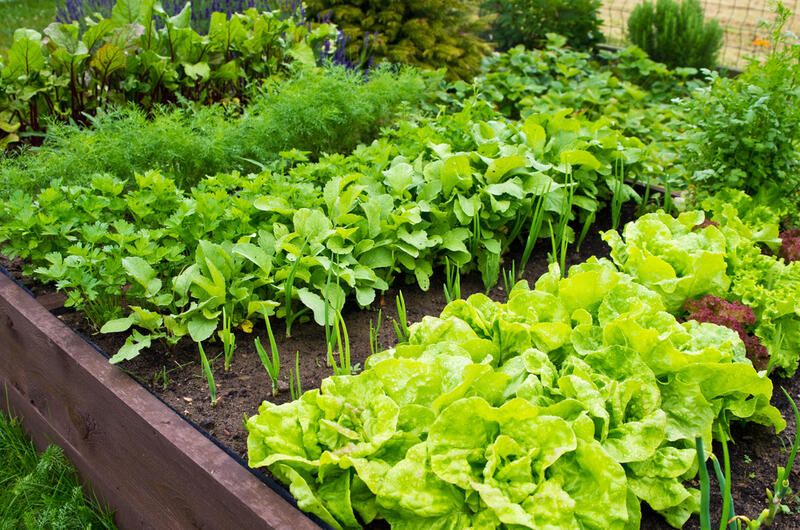
10. Use Old Tires as Herb Containers for Gardens
Tire planters are perfect for container gardening. If you're looking for the best way to grow your herbs in your backyard, then this is it!
It's simple, affordable, and easy to do! Use old tires instead of planting directly in the ground and you'll never have to worry about weeds again!
You can use larger tires to make a planter for vegetables or herbs. They're perfect for growing tomatoes, peppers, basil, and more!
You can also use smaller tires as individual planters. This is great if you only want to grow one type of herb at a time.
11. Tiered Herb Garden on Wheels
An herb garden on wheels is a great way to get your feet wet in the world of gardening. It's also a fun and beautiful way to organize a small space. If you're looking for an easy-to-care-for, compact vegetable or herb garden, this is the project for you!
A tiered herb garden is so simple that it can be done with just one tool: your hands (and maybe some gloves). They're perfect for beginners and experienced gardeners alike because they have no complicated planting methods or watering systems involved.
12. Build a Raised Bed Planter Box for Small Yard or Balcony Gardening Space
With a raised bed planter box, you can grow your herbs in an area that you might not have thought possible. By making a box and filling it with good soil, you'll be able to grow your herbs in a small space like on your balcony or even on top of the deck.
A wooden frame will work well as long as it's sturdy and strong enough to support the weight of your plants over time. You can fill this box with bricks or stones for added stability if needed but make sure that whatever method you choose doesn't weigh too much so as not to cause damage when filled with dirt!
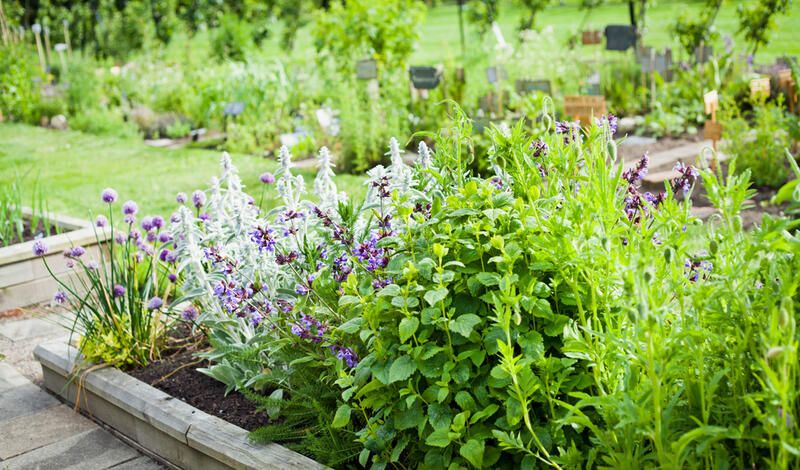
13. Try Planting Some Lemon Balm in Your Herb Garden
Planting some lemon balm might be just the thing to help you relax. This herb is a perennial, so it will come back year after year, and its lemon flavor makes it a great addition to herbal tea blends.
But there are other reasons why you should try planting this herb in your garden.
Lemon balm has been used for centuries for its antibacterial and antifungal properties, as well as its ability to stimulate digestion. Fresh herbs are also good for the skin—the leaves can be rubbed onto dry skin or left on the skin overnight as an astringent (a substance that tightens tissue).
If you have sensitive skin or simply want to keep things fresh during summer heat waves, we recommend adding some lemon balm plants to your herb garden or growing them in pots indoors.
14. Plant French Thyme in Pots
Don't let the French name fool you. Thyme may be elegant and classy, but it's also easy to grow. Just make sure that the potting mix is moist but not soggy, and that there are drainage holes in your pot. Thyme loves sunshine, so place it in a spot where it will get at least six hours of sun per day (ideally full sunlight).
Thyme is a perennial plant that grows best in USDA zones 6 through 10 outdoors, so if you live somewhere colder than this range, try growing thyme indoors or as an annual herb instead.
15. Grow Some Sage Plants
Sage is one of the best herbs you can grow for its medicinal benefits, but it's also an easy-to-grow perennial that thrives in any sunny spot.
Sage is so easy and adaptable that you might be able to plant a variety or two without even digging up your yard!
The herb does best in well-drained soil and will grow just fine in containers as long as they have drainage holes.
If you're looking for an excuse to get outdoors this weekend but don't want to leave your backyard, try planting some sage.
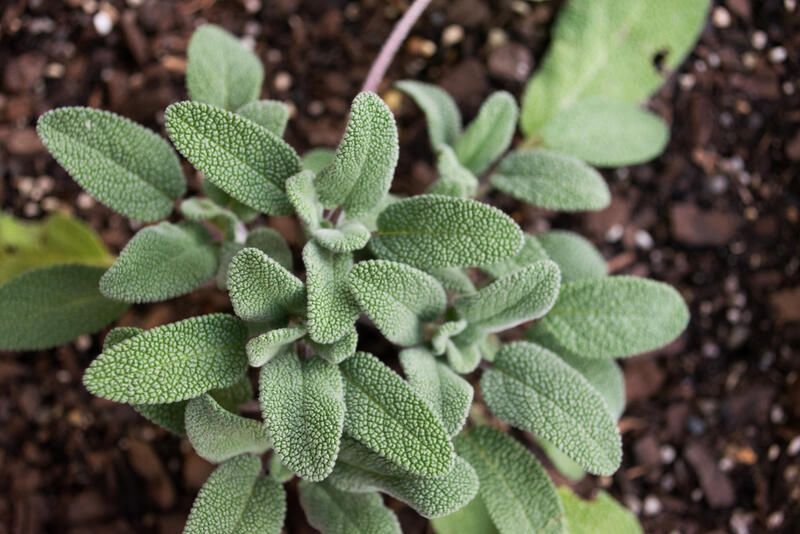
16. Grow Mediterranean Herbs in a Hot Sunny Spot
Mediterranean herbs are a class of plants that thrive in hot, sunny climates with well-drained soils. They are drought-tolerant and will grow in sandy or rocky soils as long as drainage is good.
The key to successfully growing Mediterranean herbs is to choose the right location for them.
It's important to put them somewhere that gets plenty of suns and has good drainage holes in the bottom.
17. Plant some Aromatic Lavender
This aromatic herb is well-loved for its sweet, subtle scent and easy cultivation. It can be used fresh or dried to add flavor to your favorite dishes.
Some lavender plants have blue flowers while others are purple; both colors are beautiful but the latter also has a more intense aroma than its lighter cousins.
Lavender can be grown as an annual or perennial herb depending on where you live. If you live in a temperate climate with mild winters then lavender can survive for multiple years by simply cutting back the plant’s stems every winter (which should not be too hard to do since it grows so slowly).
18. Grow Chives in a Container
Chives are easy to grow and make great companions for other herbs and vegetables. They’re one of the first herbs that beginners can cultivate, so start them off right with these tips:
-
Plant chives in a container with drainage holes, such as a pot or colander. The small leaves of chives will rot if they sit in water, so make sure to use containers that allow the soil to drain well without sitting on top of it.
-
Choose pots that are at least 8 inches deep so you can plant multiple layers of chive plants within one container. A 12-inch deep container with 4–5 inches between each layer is ideal if you want a lot of chive growth from one plant (or plan on doubling up on seeds).
-
Grow your chives outdoors during warm weather months where you live—chives like lots of suns but do best when temperatures stay above 60 degrees Fahrenheit.
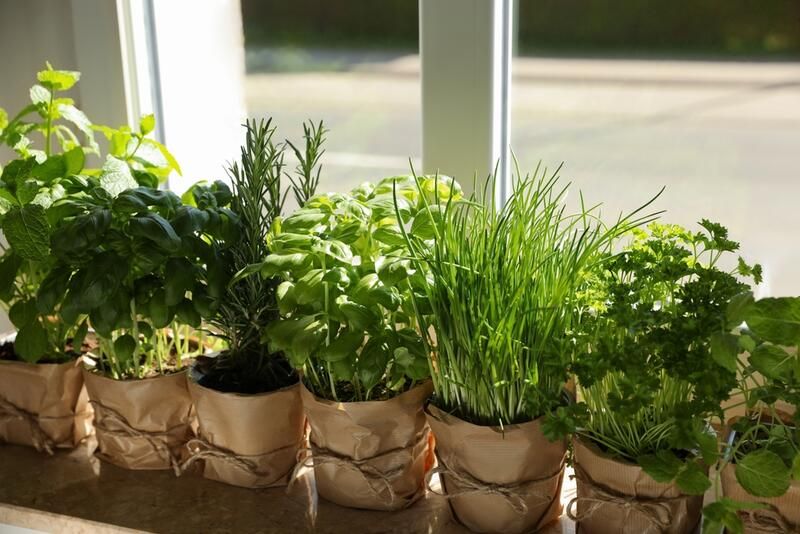
19. Use Containers That Provide Good Drainage Holes
If you're using pots, make sure they have drainage holes. Otherwise, water will pool on top of the soil, which can cause it to become soggy and moldy.
The best container for herbs is one that's at least 5 inches deep with 10-12 inch sides and multiple holes in the bottom. This allows them to breathe freely while still draining any excess moisture that may be trapped inside (or outside) your pot.
If you don't have any containers with these measurements available at home, consider investing in some new ones instead of trying to modify something else like an old bucket or basket (which doesn't allow airflow).
20. Grow Fresh Rosemary & Parsley Herbs
Rosemary and parsley are two perennial herbs that you can harvest year-round. They're also very easy to grow.
Parsley is technically a biennial herb, but if you keep it indoors, its lifespan will be extended indefinitely—and it will still thrive outdoors too!
Rosemary on the other hand is an evergreen herb. It's perfect for growing indoors or out, but in colder climates where the ground freezes during winter months, rosemary may need to be transferred inside so that it doesn't die off completely by mid-January.
21. No Herb Garden is Complete Without Some Mint Plants
Mint is one of the most popular herbs in the world.
Mint is a perennial herb, which means it will come back year after year if you want. It grows best in full sun but can also handle some shade. It needs regular pruning throughout the summer since it tends to become overgrown if not kept in check; however, once established, mints are quite easy to maintain.
If you're looking for an herb garden that doesn't require much maintenance—and still provides plenty of flavors—mint is worth considering!
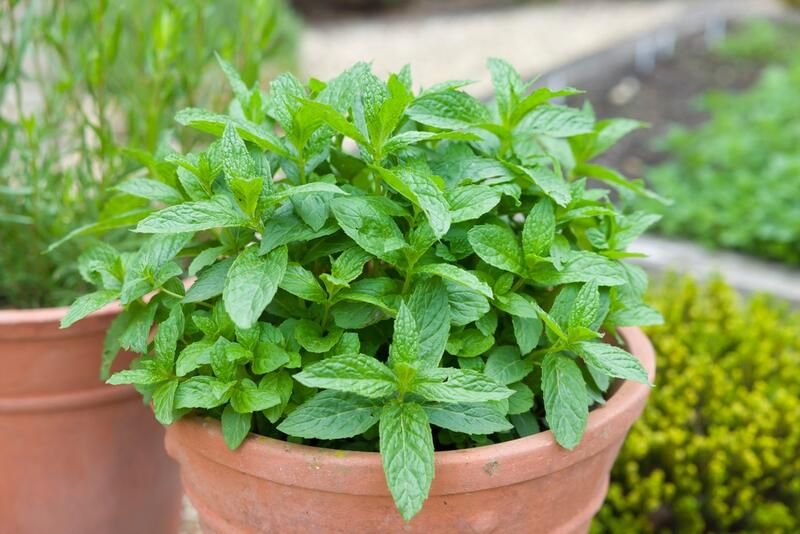
22. Grow Herbs in Raised Beds in Moist Soil
If you want to grow herbs in pots or raised beds, then moist soil is the best bet. Just ensure it’s well-drained so the roots don’t rot.
You can grow herbs in a variety of containers, but if you use terra cotta pots, remember to drain them once a week so they don’t get too heavy.
If you prefer wooden planters or large clay pots instead, make sure that they have drainage holes for water to drain out of them properly.
23. Plant Herbs in Self Watering Pots or Containers
Have you ever tried to grow herbs in the ground and had them wither up and die because you forgot to water them every day?
That’s where self-watering containers come in. These pots are designed to keep the soil moist, so all you have to do is fill up their reservoirs once or twice a week.
You can also add some fertilizer to the reservoir too! They’re perfect for people who want their gardens but don't want to expend a lot of effort keeping them alive.
24. Label Your Plants for Easy Identification
Many herbs can look almost identical, but still have very different growth conditions, That is why plant labels are essential if you're planning to keep your herbs healthy and thriving.
There are a variety of ways to do this, ranging from the permanent marker and sticker gun method to a labeler. And if you're feeling particularly creative, consider using paint or markers on your pots!
If you want something simple that'll last for years, go with this option:
-
Stick a plant label in the soil near each herb. You can use any kind of permanent marker (Sharpie works great), but avoid painting because it can wash off in wet weather or fade over time—and don't forget to write down when they were planted!
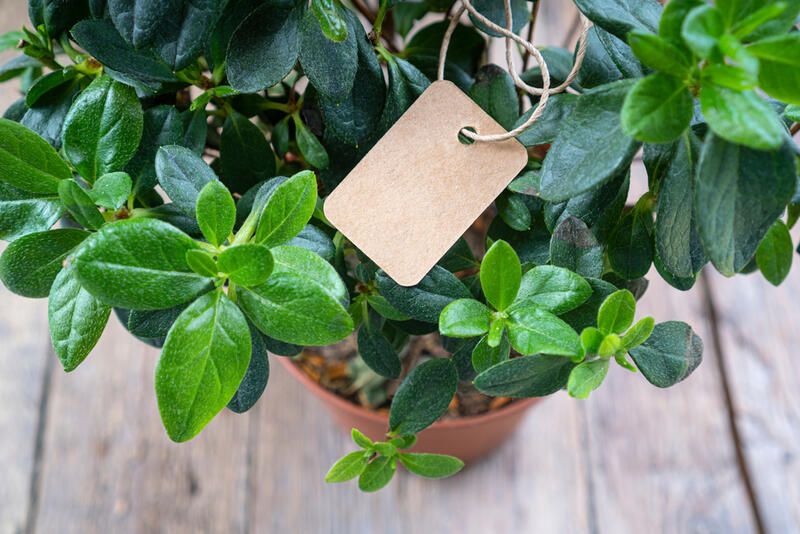
25. Keep Leaves Healthy and Fragrant by Pruning Regularly
If you prune your herbs regularly, they will be beautiful and healthy. They'll also help keep the bugs away, and they'll smell great!
Pruning parts of the plant that are dead or dying will encourage new growth and help your favorite herbs thrive.
For example, if you have basil growing in a pot on your patio and the leaves are turning brown and curling up, it might mean that the plant needs water or some nutrients in its soil (you can double-check by squeezing your fingers into the soil).
You Don't Need a Green Thumb To Start Your Own Herb Garden!
These are just some of the many ways you can create your herb garden. Whether you’re a seasoned gardener or new to it all, we hope these ideas will inspire you!
And if you need more information on specific herbs, don't hesitate to contact our plant experts today!
Don't forget to check out shrubhub.com and claim your 70% discount on our 3d landscaping services!


